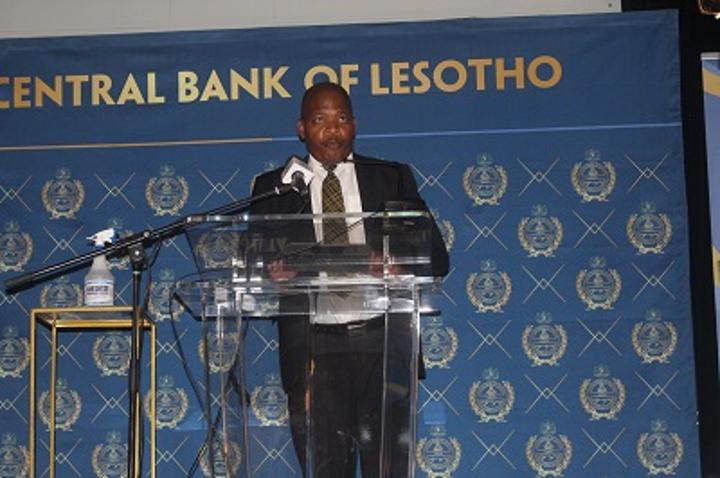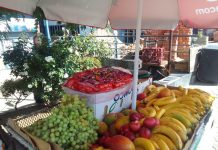Africa-Press – Lesotho. The Central Bank of Lesotho (CBL) Monetary Policy Committee (MPC) held its 93rd meeting to assess the adequacy of monetary policy targets. During the meeting, the committee reflected on
international, regional and domestic economic developments and financial markets conditions. Speaking at the briefing CBL Acting Governor Lehlomela Mohapi explained that global economy continues to remain under
pressure from the prolonged effects of Covid-19. He said the International Monetary Fund (IMF) World Economic Outlook, released in January 2022 projected
global growth at 4.4 % in 2022, a downward revision from 4.9 % estimated in October 2021. He pointed that this was largely reflective of the continued
emergence of new Covid-19 variants and on-going supply chain bottlenecks. He stated that risks to the outlook were tilted to the downside and include new
Covid-19 variants, supply chain disruptions, energy price volatility and rising debt levels. “The broad measure of money supply (M2) rose by 9.1 % during the 4th quarter of 2021 relative to a moderate
growth of 0.3% during the previous quarter. This was due to an increase in both the Net Foreign Assets (NFA) and Net Domestic Assets (NDA) during the review
period. Credit to the private sector grew during the last quarter of 2021, although at a slower pace compared to the preceding quarter. Credit extended to
the households grew by 3.2 % as a result of an increase in both personal loans and mortgages. This was however moderated by a 5.4% decline in loans extended
to business enterprises,” Mohapi explained. Mohapi informed that during the 3rd quarter of 2021 the current account registered a deficit equivalent to 7.4% of Gross
Domestic Products (GDP), following a larger deficit of 10.2 % of GDP observed in the second quarter. He said that this was driven mainly by improvements in
the goods account driven by increased exports of diamonds, clothing and textiles, water and some agricultural products however, poor performance of the services account as well as the income accounts dampened this
improvement. Mohapi noted that having considered the Net International Reserve (NIR) developments and outlook, regional inflation and interest rate outlook, domestic economic conditions, the global economic
outlook and the MPC decided to revise upwards the current NIR target floor of US$760 million to US$790 million. “At this level the NIR target will remain
consistent with the maintenance of the exchange rate peg between the loti and the South African rand. Increase of the CBL rate from 3.75% per annum to 4.00 %
per annum and the rate set at this level will ensure that the domestic cost of funds remains aligned with the rest of the region. He directed that the government budgetary operations recorded a surplus equivalent
to 5.0% of GDP during the last quarter of 2021 compared to a deficit of 11.7 % of GDP in the previous quarter. He said that the stock of public debt was
estimated at 57.2% of GDP compared to 59.5% of GDP in the previous quarter. Mohapi added that notwithstanding the progress most countries made in vaccinations and policy support, the global economy
enters 2022 in a weaker position than previously expected with risks to the outlook tilted to the downside. He said in particular, the global growth was
vulnerable to new Covid-19 variants, supply chain disruptions, volatility of energy prices and rising debt levels. He also indicated that the outlook for
the domestic economic growth has been revised downwards by an average of 0.2 percentage points in the medium term and risks to the domestic economic outlook
included an unpredictable path of Covid-19 pandemic and uncertain fiscal outlook. Mohapi said initial data indicated a strong growth in the United States (US) during the last quarter of 2021.
“Economic activity was supported by higher performance of manufacturing and services
sectors, coupled with high personal consumption expenditure. On the contrary, the preliminary indicators pointed to slower growth in the Euro Area due to
sluggish performance in manufacturing and services sectors. Growth in the UK was also expected to slow down during the fourth quarter of 2021, on account of
resurgence of Covid-19 cases and a fall in consumer spending. In China, economic activity slowed to 4.0 % in the fourth quarter of 2021, compared to a
growth of 4.9 % in the preceding quarter,” he educated. He directed that the global labor market conditions were expected to have worsened during the 4th quarter of 2021 on the
back of subdued economic activity. He stated in relation to price developments, inflation rose in many economies as a result of continued supply chain disruptions
and rising energy prices. He added that the monetary policy stance was tightened in some economies as some central banks withdrew their stimulus on concerns of rising inflationary pressures.
Mohapi also highlighted that global financial markets indicators displayed elevated market risk amid fears around falling real wages. “Yields in emerging markets, particularly in
South Africa (SA), remained largely unchanged with slight improvements on both the short and long ends of the curve. While foreign investors were net buyers
of South African bonds and equity, the rand is expected to remain under pressure during the first quarter of 2022 due to the expected rate hikes in the US and policy uncertainty as well as energy supply challenges”, he said.
For More News And Analysis About Lesotho Follow Africa-Press






